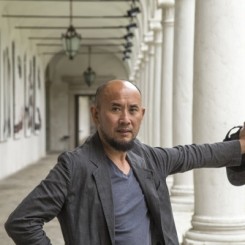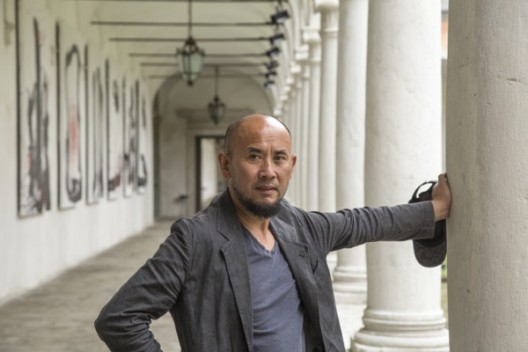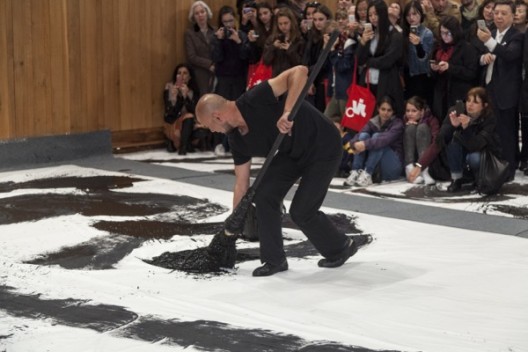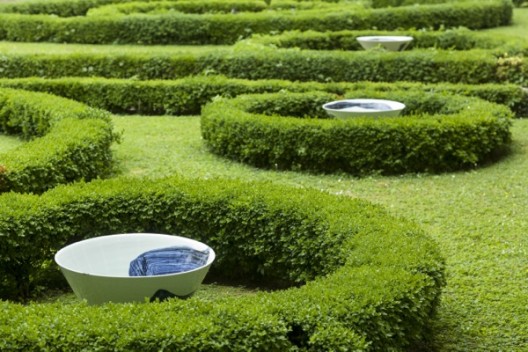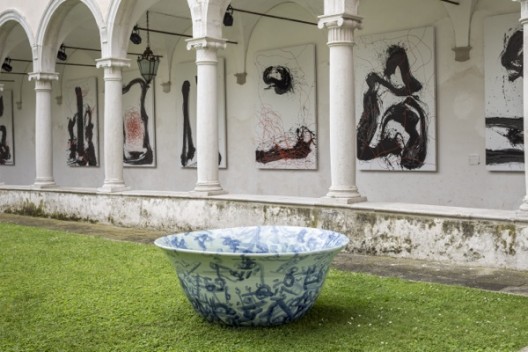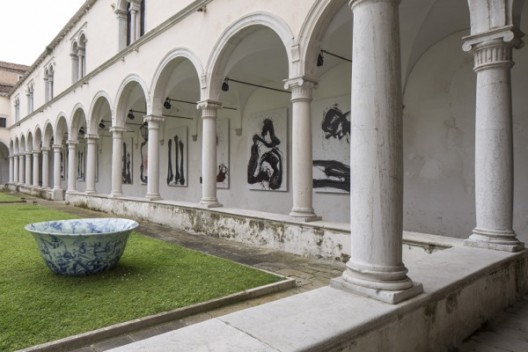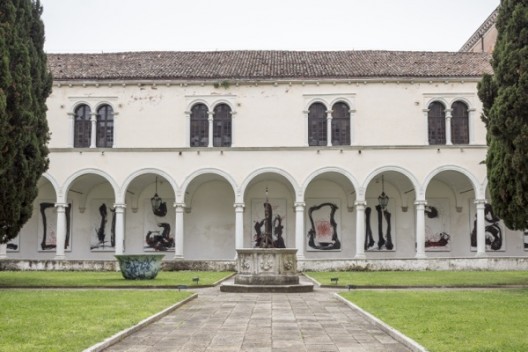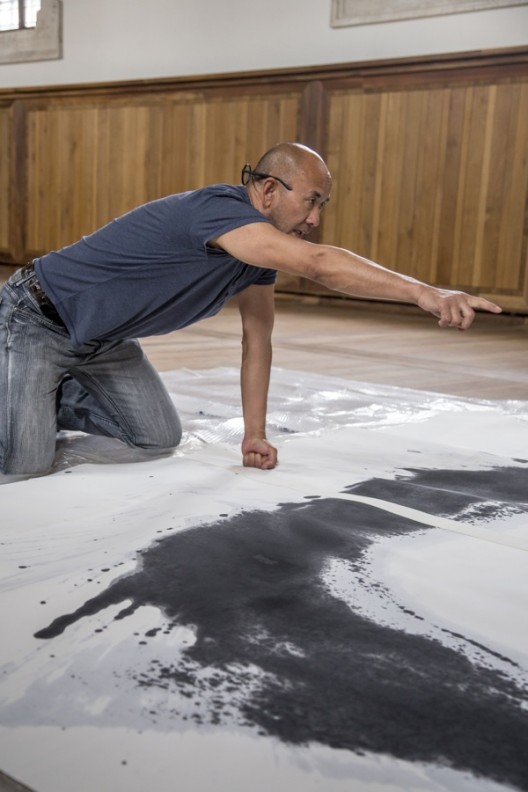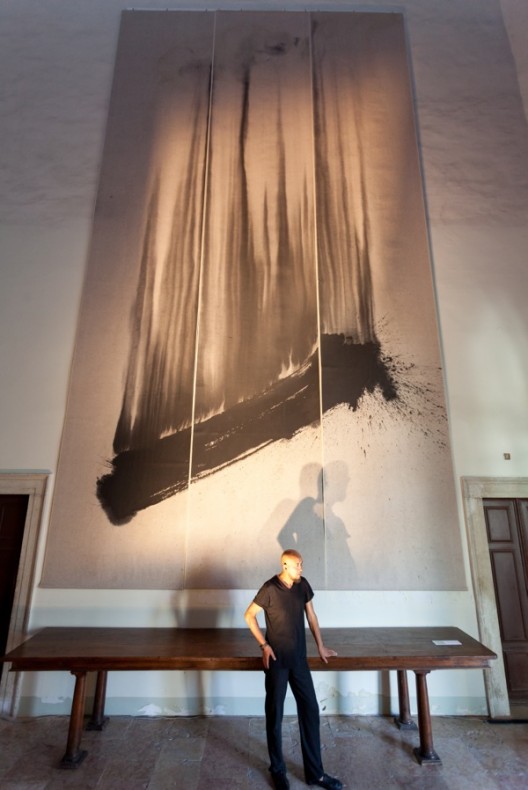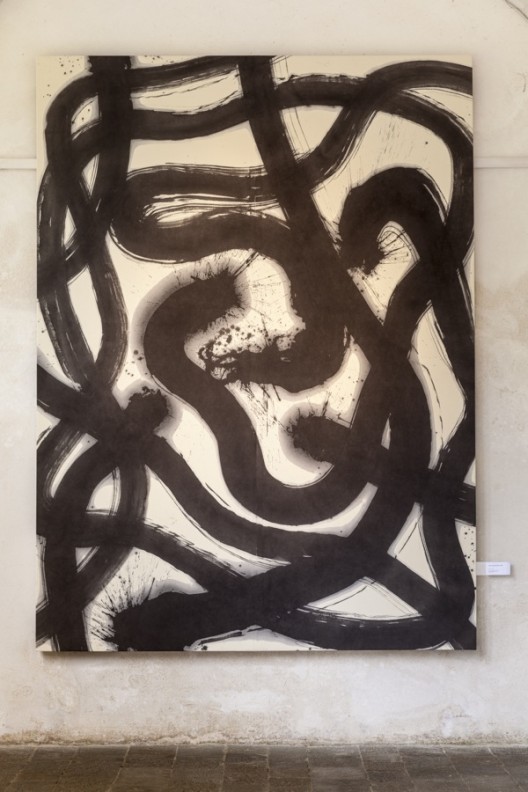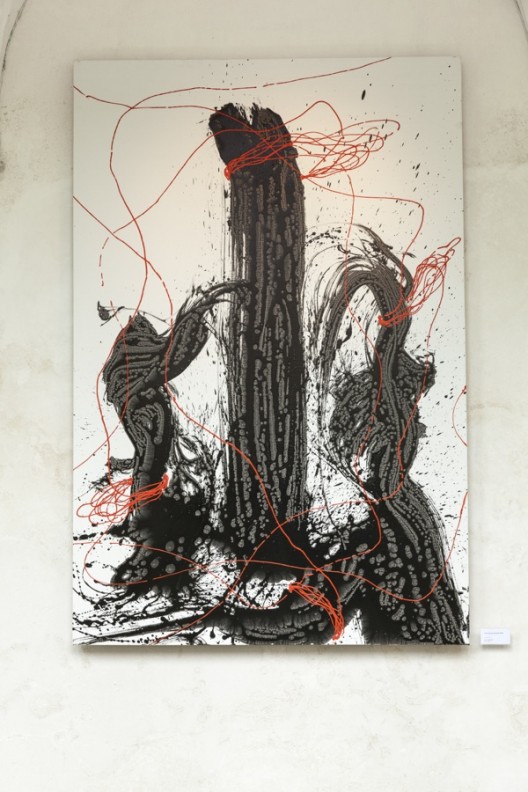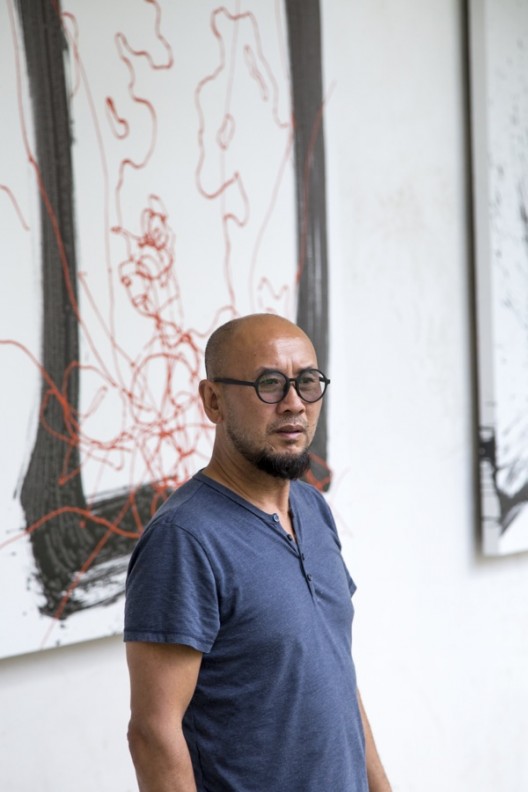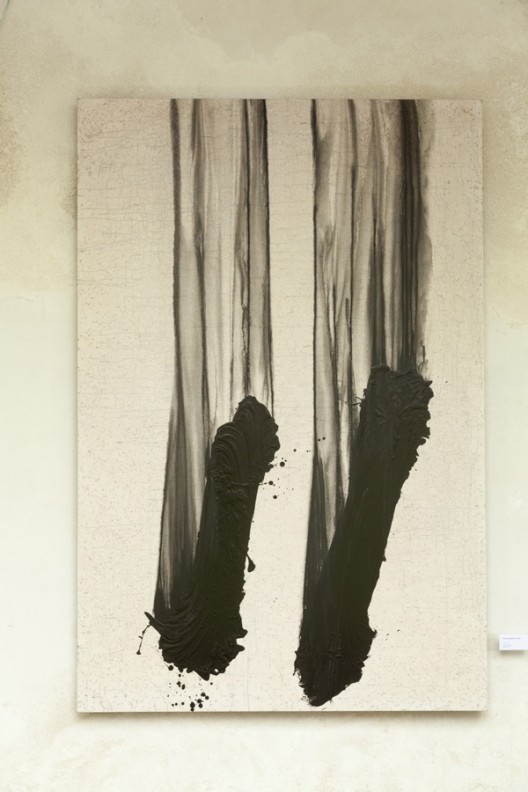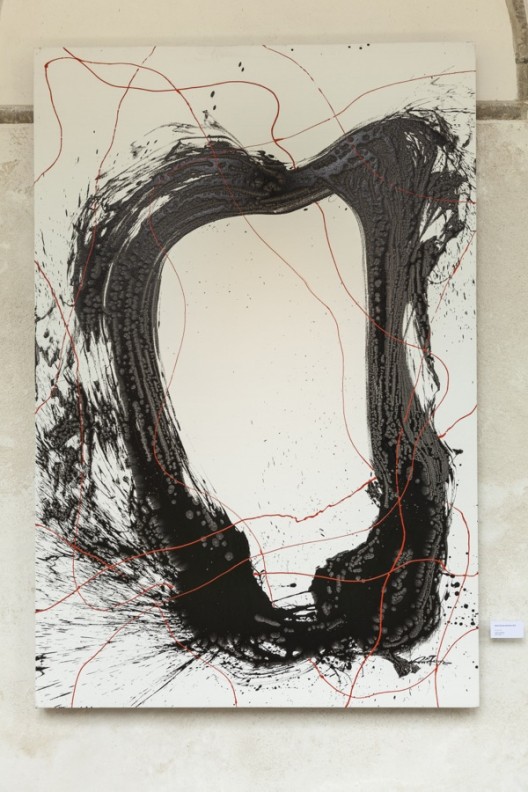Fondazione Giorgio Cini, Venice
[Press release]
VENICE, ITALY – “Waiting for Qin Feng,” a solo exhibition of work by Chinese ink artist Qin Feng, will be on view in Venice from May 19 – July 19, 2016. Installed in three locations including the former Monastery of San Giorgio Maggiore, now home to the Fondazione Giorgio Cini (the first contemporary Chinese art installation), the Armenian Catholic Monastery on San Lazzaro Island and Venice International University (VIU) on San Servolo Island, the exhibition will be presented in collaboration with the Fondazione Giorgio Cini and is curated by Achille Bonito Oliva and Ambassador Umberto Vattani.
The exhibition takes the form of an architectural intervention—the marriage of Eastern art in a space imbued with Western cultural history. The exhibition embodies the cultural exchange of the Silk Road, collapsed into one space and an accumulated historical moment. In the catalog accompanying the exhibition, Oliva writes, “Qin Feng’s work undoubtedly occupies an original position on the international scene, [creating] an abstract language which breaks through the frame of the painting and invades the lived architecture.”
The Venice exhibition will unfold as a multi-faceted dialogue between European Renaissance architecture and contemporary Chinese art. The conversation will manifest itself in a number of ways Including Qin Feng’s on-site painting performance in front of Paolo Veronese’s The Wedding at Cana, a digital facsimile realized by Factum Arte, Madrid, which is in the Refectory of the former Monastery of San Giorgio Maggiore. Originally commissioned by architect Andrea Palladio to adorn the dining hall he designed, the painting was executed and hung in the monastery until Napolean’s reign, during which it was sent to the Louvre. A large canvas will be placed on the floor in front of the painting on which Qin Feng will execute his work. Other exhibition highlights include an installation of traditional Chinese Jingdezhen porcelain and other works in the historic Armenian Catholic Monastery, and at Venice International University situated to reflect on the monastery’s architecture.
As one of the most distinctive and traditional mediums of Chinese art, ink painting has a history dating back more than 1,000 years. Over the centuries, the art form was kept alive through the practice of copying the work of earlier masters with little change. Today, a group of contemporary artists have reinvigorated the medium, shedding the rigid constraints of tradition and addressing modernity through a revolutionary new artistic language that remains respectful of ancient models.
Qin Feng is at the forefront of this new school of experimental ink brush painting. His emotional and explosive images seamlessly blend ancient Chinese calligraphy with modern Western abstract expressionism. Having lived and worked in Germany and the United States, he exemplifies the contemporary Chinese artist whose career and creative development have played out on a global stage. Being rooted in two worlds, Qin Feng’s robust images and dramatic architectural installations are expansive and inclusive. His work proves the continued relevance of brush and ink as mediums and calligraphy and its iterations as contemporary forms.
It is Qin Feng’s hope that this exhibition will be the beginning of a new “Silk Road” for cultural exchange; an opportunity to create an all-inclusive art world. As an ancient
network of trade routes that were central to interaction between Asia and Europe, the “Silk Road” was an important vehicle for promoting economic and cultural understanding. Xinjiang, Qin Feng’s home in the Northwest of China, was a stop on the ancient Silk Road and his awareness of the Silk Road’s role in connecting disparate cultures has had a big influence on his work.
“Waiting for Qin Feng” is timed to coincide with the Venice Architectural Biennale whose theme ‘Reporting From the Front” is a call to architects to consider their role in the improvement of living conditions for people from all walks of life. This concept is mirrored in Qin Feng’s exhibition that promotes the importance of inclusivity and cultural interaction as a result of the greater understanding of our contemporary civilization through open dialogue.

About Qin Feng
Born in 1961 in Xinjiang, China, Qin Feng graduated from Shangdong Art Institute, China. Feng is renowned for his ink work. Using traditional Chinese calligraphic tools, he employs the brush with the unrestrained energy of the European Abstract Expressionists, combining the gestural impulses of Western action painting with the tradition of Chinese calligraphy painting. He has won several art awards from the City of Berlin and the Vermont Art Center. He has exhibited in major galleries and museums like the Goedhuis Contemporary in New York, The Beijing Museum of Contemporary Art in China, and The Metropolitan Museum of Art in New York, Yale University Museum, The Ford Foundation, The Museum of Fine Arts Boston, among several others. His works have sold at various salerooms of major auction houses like Sotheby’s, Christie’s, Bonhams, and Poly International Auction. Feng lives and works in Beijing and Boston.
About Achille Bonito Oliva
Achille Bonito Oliva is an Italian contemporary art critic and curator based in Rome, where he is a professor of History of Contemporary Art at La Sapienza University. Bonito Oliva has curated thematic and interdisciplinary exhibitions, including “Contemporanea” (Villa Borghese, Rome, 1974), “Aperto 1980″ (together with Harald Szeemann, Venice Biennale, 1980), “Avanguardia Transavanguardia” (Mura Aureliane, Rome, 1982) and “Minimalia” (P.S.1 Contemporary Art Center, New York, 1998). He directed the 45th Venice Biennale (1993), the 1st Valencia Biennale (2001), and was the curator of the Italian Pavilion at the 7th Paris Biennale (1971). He has been awarded several prizes and recognitions, including the Valentino d’Oro, an international prize for art critics, in 1991.
About Umberto Vattani
Ambassador Vattani has had a distinguished career in service to the Italian government for many years. In 2005 he was appointed President of the Council of Ministers’ National Institute for Foreign Trade (ICE). Under his presidency ICE launched “Made in Italy” merging economics and culture. This highly successful marketing campaign celebrated the high quality and sophistication of Italian luxury goods. It also included partnerships with universities and research centers worldwide as well as many restoration projects in Italy and other countries. For his role in support of culture, he has received awards from the heads of state in many countries.
About The Fondazione Giorgio Cini
The Fondazione Giorgio Cini is a non-profit cultural institution based in Venice, Italy. It was established by Vittorio Cini in memory of his son Giorgio, with the aim of restoring the Island of San Giorgio Maggiore (devastated after 100 years of military occupation) and of creating an international cultural center that would re-integrate the Island into the life of Venice. The Fondazione Giorgio Cini’s mission is to promote the redevelopment of the monumental complex on the Island of San Giorgio Maggiore and encourage the creation and development of educational, social, cultural and artistic institutions in its surrounding territory.

